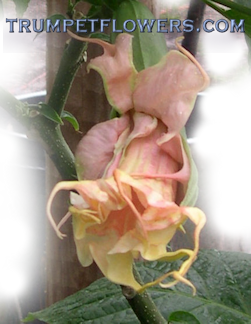Caresheet for African Banded Rubber frog
Phrynomantis bifasciatus, or the banded rubber frog; has smooth, shiny skin that is soft and rubbery, hence the nickname. His natural habitat is a savanna style climate, and he lives from Somalia to Zaire down to South Africa. Fat and stout in appearance, the frog can grow to 2 and 3/4" in size. The shape is that of narrow-mouthed frogs, in which he is kin to. A burrower, he stays underground in termite holes or digs his own burrow in the dry season, only to appear when the first rains awaken him from his deep slumber.
He then congregates to breed in rain-pools, where the female can lay as many as 1500 eggs. The tadpoles of this frog are very similar to that of xenopus, the young hang upside down in the water and are filter-feeders. It takes about one month for the tadpoles to then begin to metamorph into miniature frogs.
Set-Up
Give the banded rubber frog a wider than taller tank, 10 gallons for the first, 20 for second and third, 40 for 4 to 6 frogs. They will burrow into the substrata, so if you want to be able to see them, you will either need to get a red light for night viewing (nocturnal frogs) or change the substrate to smooth river stone and then provide them with faux burrows or small plastic caves, one for each frog.
Place their lighting on a timer, 12 hours of each darkness (with red light) and light. Be sure to include a strong plant-grow bulb that the frogs cannot reach. This lighting is good for the frogs as well as the plants. For additional lighting, use daytime fluorescent. Keep the temperature between 70° and 74° in the evenings, and 78° and 82° in daytime.
The humidity levels should be kept moderate in fall and winter, between 45° to 55°. Spring and summer, raise this to 65° to 70°. (Higher if trying to cycle your frogs in spring).
Always allow the frog access to clean, cool water by placing a shallow plastic pool at end of tank farthest from grow-light. If keeping more than one frog, make the pool large enough for several of them to access it at one time. Having more than two frogs may invite the idea of placing a larger pool with a pump & sponge filter in pool to help keep clear. If no filtration, clean the pool daily of any scum that will develop, and replace with clean treated water. If filtered, clean the sponge in treated water and replace water once weekly (more often if soiled).
 The African Rubber Banded frog naturally eats termites and ants as his staple. Try to raise an ant colony to
compensate his diet changes, and give medium to large crickets that you have previously
fed and watered. Dust the crickets once a month if you are feeding the crickets
Flukers calcium fortified gel-drink and cricket food. If not feeding them
any specialized diet, dust every two weeks just before feeding. Fly maggots,
fat beetle-grubs and tiny red earthworms are also relished.
The African Rubber Banded frog naturally eats termites and ants as his staple. Try to raise an ant colony to
compensate his diet changes, and give medium to large crickets that you have previously
fed and watered. Dust the crickets once a month if you are feeding the crickets
Flukers calcium fortified gel-drink and cricket food. If not feeding them
any specialized diet, dust every two weeks just before feeding. Fly maggots,
fat beetle-grubs and tiny red earthworms are also relished.
Feed them every other evening just after red light comes on, and look to make sure the frogs are fat in the morning. Immediately remove any uneaten or dead bugs from the night before.
It is a good idea to have a false-bottom in this tank. Thoroughly clean it at least once a month (if stone substrate), including lifting the caves or burrows out carefully and scrubbing in a weak bleach solution. Rinse well in treated water before return to the vivarium. Strongly mist-spray off any plants, (live or real) every week and allow water to flow to return pail of false-bottomed tank. Remove any poop and spray rocks clean every other day to remove ammonia.
Use a screen top on this tank, as hygrometer levels should stay moderate. Keep the frog away from drafty spots, and out of rooms where people smoke, and away from kitchen areas.
Further Onsite Help
Basic Frogcare (choosing healthy frogs, species mixing, feeding, etc.)
Vivariums (to establish and maintain, lighting, substrate ideas, etc.)
Quarantine (keeping vivarium disease-free, how to set up quarantine tank)
Water 101 (How to establish & maintain high quality water)
Raising Insects (Info about raising your own insects, including grubs)
Frog Breeding (Savannah style setup information)

